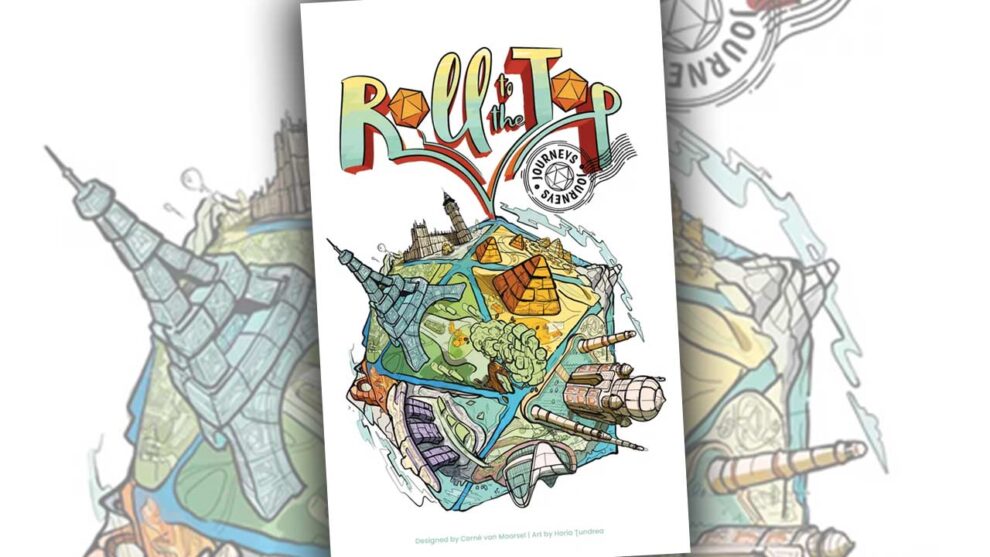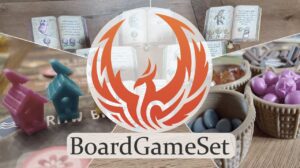Disclosure: Meeple Mountain received a free copy of this product in exchange for an honest, unbiased review. This review is not intended to be an endorsement.
At Meeple Mountain, we’ve been in a bit of a ‘fine’ rut. So many games come through the Meeple Mountain base camp, but few have the crampons to climb all the way to the top. It’s been a barrage of average, plenty of perfectly good, but few that truly stand out. As my colleague Justin argues, perhaps there are simply too many games.
It’s an inauspicious start to a review. Ominous. Unpromising. Discouraging.
I’m not too sure that Roll to the Top: Journeys does much to buck this trend of the tolerable. Except…
Let Me Roll It
A remake of a 2018 release, Roll to the Top: Journeys (just Roll to the Top from hereon) from designers Peter Joustra and Corné van Moorsel is a lovely production. Its gorgeously illustrated boards are inviting, its colourful dice ridiculously playful.
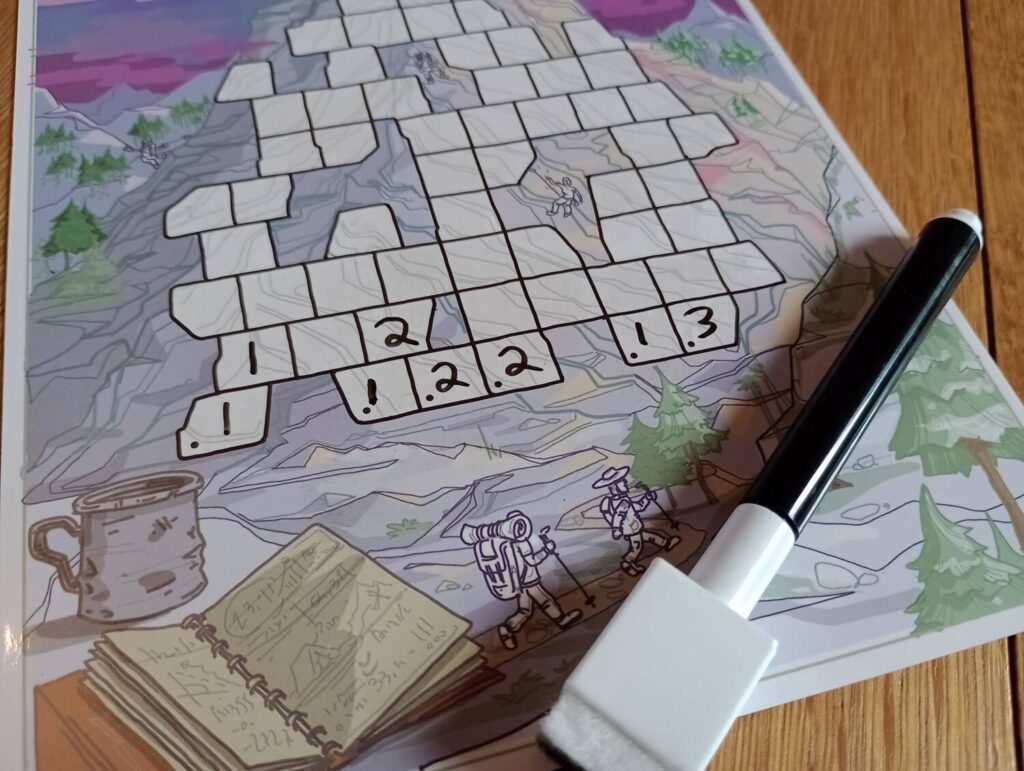
Gameplay is simple. Someone rolls the dice, everyone writes the numbers rolled or sums of those numbers in their grid. You start from the bottom, building up brick-by-brick until a vague silhouette of a famous landmark is complete. Numbers can’t be lower than the numbers directly below them, and no number can be written in a space that isn’t ‘supported’ by the number(s) below it. Between rolls you remove, add or swap a die in the dice pool, the specific direction based on the result of the action die. That’s it. Somehow the rulebook is 4 pages long, but it’s just full of examples, variants and information about the six landmarks.
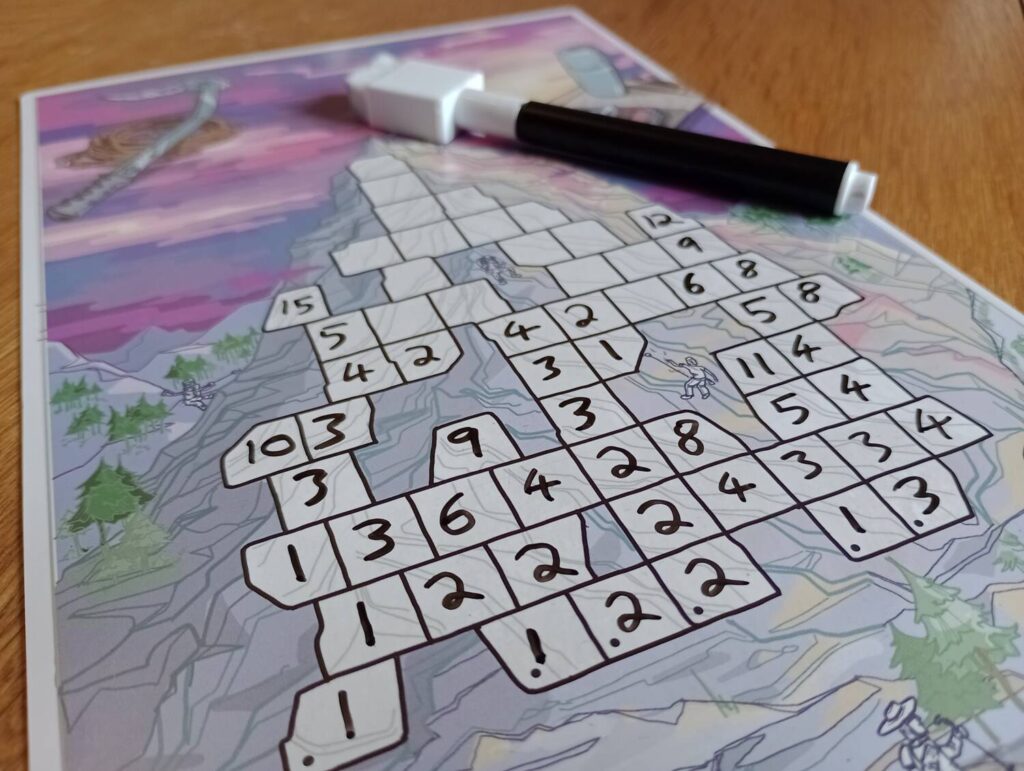
Roll to the Top is a wisp of a game. A soufflé. There’s almost nothing to it and the moment you try poking at it, looking for depth, structure or strategy, it collapses. There isn’t a moment that challenges, not a single blip in your journey from start to end. Sometimes you’ll add a couple of numbers together. Sometimes you won’t. It’s about as taxing as a Sunday afternoon snooze on the sofa.
There’s the ghost of interaction, a six-sided sense that perhaps sometime in the distant past other players mattered. I could tell you that you can purposefully select a die to add or remove from the pool based on the numbers your opponents need. I’d be exaggerating, though. Sure, you can do that, but whilst the individual pathways of their ascent might be different from yours, the numbers they’re after aren’t often wildly different from the numbers you want, and chances are the dice won’t play ball anyway.
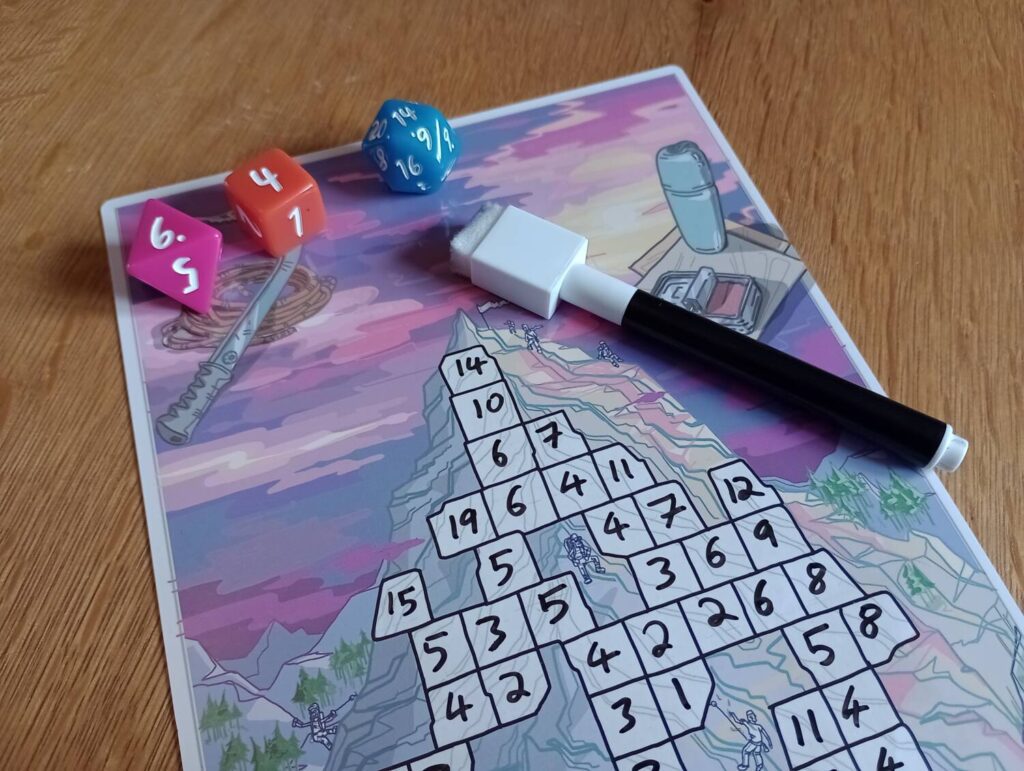
Despite this, the race to the top against other players clearly makes the game, since the solo variant is deeply uninspiring. Boring and too easy. I wonder if it’s slightly broken – there’s an approach you can take to judging risks in the solo mode that has never not given me the highest score. I’ve not had the enthusiasm to play solo more than a handful of times to test this thoroughly, though.
The Rolling Bones
Without Allplay’s wonderful production Roll to the Top is inconsequential and forgettable, an insignificant snowflake fluttering aimlessly in an avalanche of roll and write games.
And yet…
I have never not enjoyed Roll to the Top.
I’ve played it plenty of times since it arrived on my doorstep, as well as many games of the version that’s on BoardGameArena. Every couple of weeks I return to it, play an agreeable few games and then put it away and forget about it until the next time I wander to the room looking for something to help while away the time.
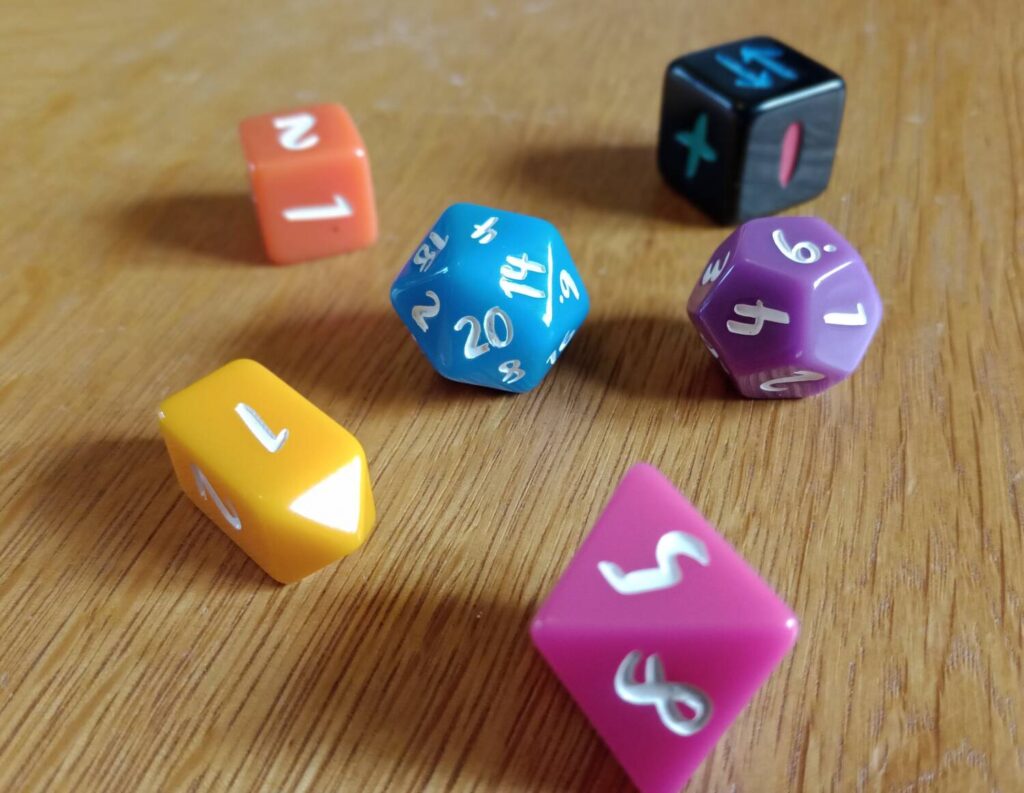
The trend for roll and write games has been to make them more and more complex, giving players multiple sheets to write on, several resources to manage, combos to activate, bonuses to trigger, and lots of crunchy decisions. Roll to the Top is a fresh breath of mountain air in the fug of its stodgy stablemates.
It’s just a deeply pleasant experience. Every sharp edge has been sanded off, every inconvenience swept out of the way. You, some bright dice, a marker pen and a nice wipe-clean board. If Jerome K Jerome’s three men took a game on their boat trip, this would be it.
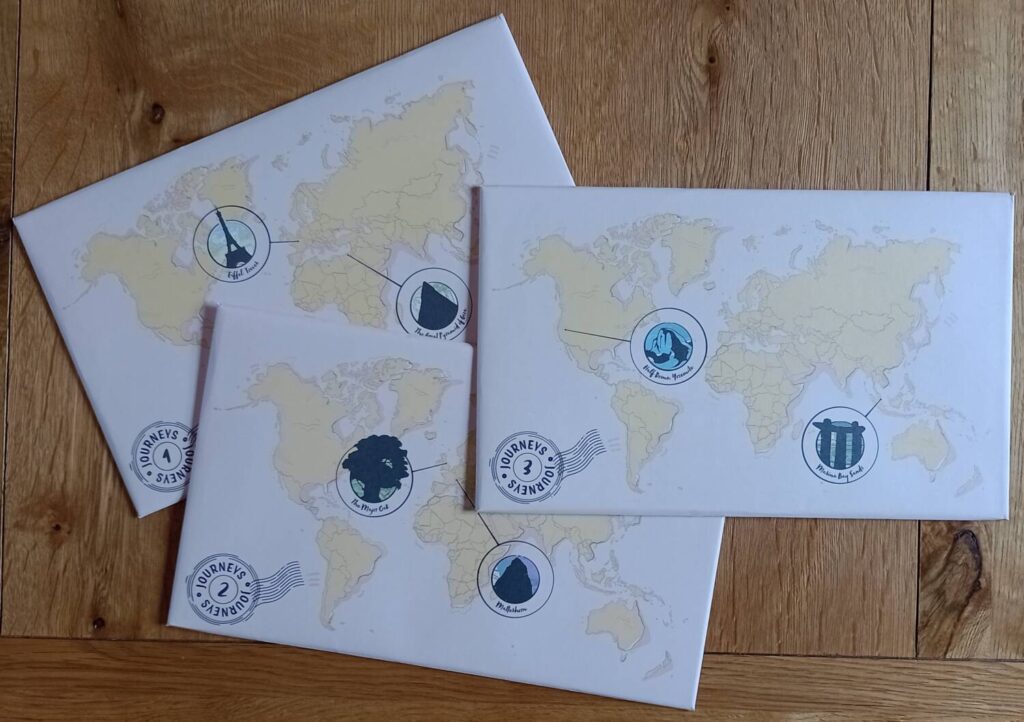
Don’t mistake easy going for toothless though. You can create an additional mountain to climb by placing too big a number early in the building process. And then the pace becomes glacial as you watch your opponents calmly scaling the cliff face whilst you wait patiently for the weather to clear and the dice to roll your way.
With experienced players, the differences between winners and losers tend to be as slight as the game itself. A small risk here, a tiny gamble there. Chancing your luck that the ripples from placing a fractionally bigger number lower down won’t flood you with wasted turns later in the ascent. A single bold decision can be the difference between success and failure, the consequences not apparent until those dice keep showing numbers that you can’t use. If your opponent scribbles down three numbers and you write one, that’s a difference of two spaces, all they need to lazily claim the game a turn before you.
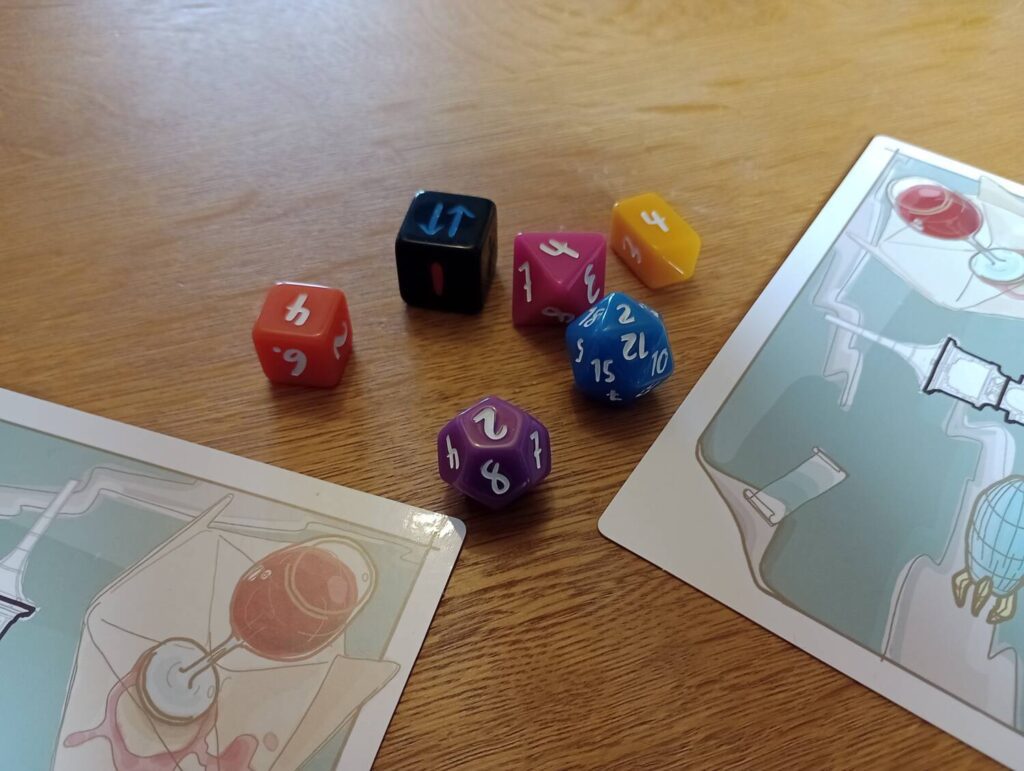
I wrote above that without the production levels, the game would be inconsequential and forgettable, but it’s a half-truth. Physically Roll to the Top is lovely, but it’s also telling that I still enjoy it in its digital form. There’s a decent game here that rewards smart plays and well-timed risk-taking.
Keep Rolling
Allplay are such a promising publisher, they’ve quietly stirred the scene over the past few years, their games competent, their productions confident. Roll to the Top is another success, slight as it is. And not enough board games feature the full range of a dice set, fewer still as lovely as these.

I do think they’ve missed a trick, though. The expansion, RtoT: Adventures, has maps with unique rules. The six locations included in the base game are all different, they all have their own cul-de-sacs and quirks, but it’s like the differences between brands of chocolate ice cream. The expansion locations have rules that allow subtractions, values increasing and decreasing, and getting bonus die results. They’re just small twists on the basic gameplay that retain the interest.
I love expansions, normally I’d be all over this but Roll to the Top is such a sliver of a game that I can’t raise the energy to hunt the expansion down. Perhaps it’s just me, but including one or two in the base game would have increased my investment in the experience. As it is, you progress through the base game without much sense of something new on the horizon. Little drives you to explore further beyond an indifferent shrug of ‘well, we’ve not tried this one yet’. It’s a shame.
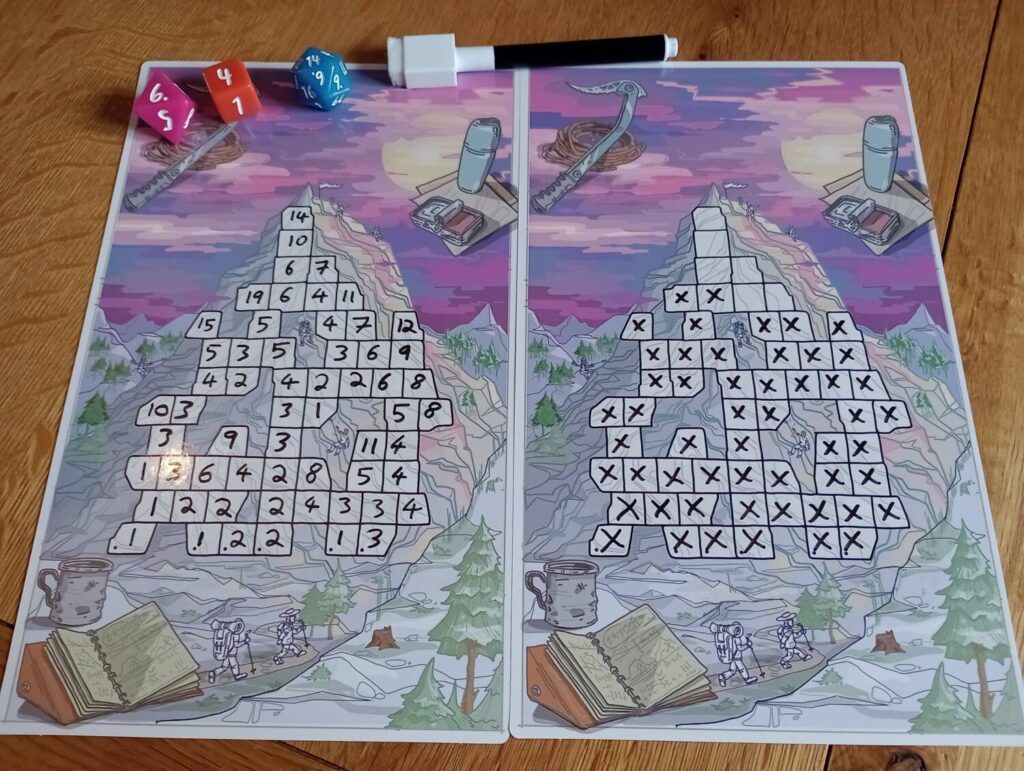
I’m also calling foul that there’s no official tie-breaker. It might be in keeping with the game’s easy-going nature but if I finish with 3 dice to spare and you finish in the same round with 1 die to spare, I want to be able to say that I’m the winniest of winners. Sometimes my hidden competitive streak surprises even me!
Sunny Rollin(g)s
When it’s not in my line of sight, I forget all about Roll to the Top. Someone could steal it from my house and I’d never notice. At the same time, I’ve surfaced from every play feeling centred and satisfied. Just enough mental and tactile stimulation to make me feel good without tiring me out. It’s like I’ve spent 15 minutes lying on the grass making patterns from the clouds.
In the annual clamour of new games, Roll to the Top stands out by not claiming to offer anything more than it does. But what it offers is a stripped back, sure-footed and quality experience of mild highs and lows. Sometimes that’s enough.


